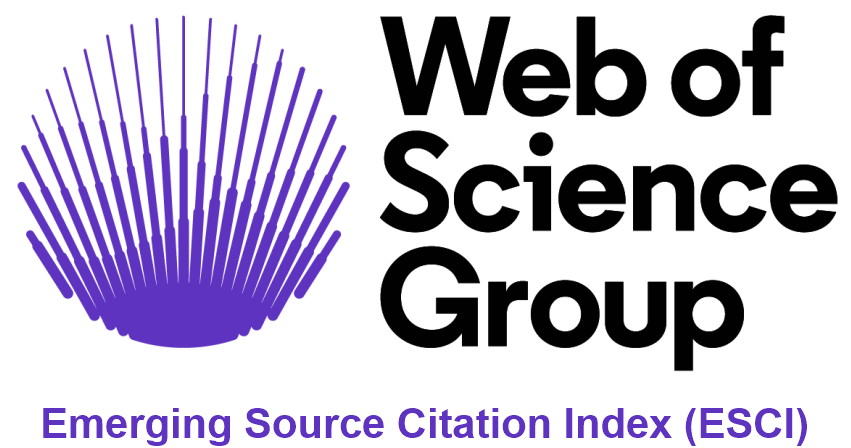Influence of the north american economy on exports and economic growth in Mexico.
DOI:
https://doi.org/10.22231/asyd.v15i3.847Keywords:
randomness, components, filter, disturbance, seriesAbstract
One of the most notable transformations of Mexican economy arose with the signing of the North American Free Trade Agreement (NAFTA), which sought to foster exports to promote the growth of the domestic economy and its productive sectors. After almost 20 years since its implementation, there is still no convincing evidence that confirms this premise, which is why this study attempts to examine whether the behavior of exports sent to the United States has an influence on the economic growth in Mexico and if this behavior is connected to random disturbances of the United States economy. For this purpose, the methodology used was decomposition of non-observable components of time series and, in particular, the application of the HodrickPrescott Filter. The results show that the exports are related to the Mexican GDP and, therefore, the impact that they generate is significant. Concerning the behavior of exports, it remains almost unchangeable in face of changes in the US economy.References
Almendra Arao, Genaro. 2007. Las Fluctuaciones Cíclicas de la Economía Mexicana. Colegio de Postgraduados, Campus Montecillo. México. 114 p.
Almendra-Arao, y A. González Estrada. 2008. Soluciones explícitas
para el Filtro estadístico Hodrick-Precott. In: Revista mexicana de Economía agrícola y de los Recursos Naturales. Universidad Autónoma Chapingo. Volumen 1, Núm. 1, México.
Balaguer J., and Manuel Cantavella-Jordá. 2001. Examining the export-led growth hypothesis for Spain in the last century. Applied Economic Letters. Vol 8. Num 10.
Balaguer J., and Manuel Cantavella-Jordá. 2004. Structural change in exports and economic growth: cointegration and causality analysis for Spain (1961-2000). Applied Economics, vol 36 num 5.
Cuadra, Gabriel. 2008. Hechos Estilizados del Ciclo Económico en México: En: Documentos de Investigación. Banco de México. Núm. 14, México.
Cuadros R. Ana M. 2000. Exportaciones y Crecimiento Económico: Un análisis de causalidad para México. Estudios Económicos, El Colegio de México A.C. vol.15, No.001, 37-64.
Chow, P. C. Y. 1987. Causality between export growth and industrial development: Empirical evidence from the NICs. Journal of Development Economics. vol. 26, num. 1, 55-63.
Donoso y Martín. 2004. Exportaciones y Crecimiento Económico: El caso de España. In: Serie Economía Internacional. Madrid España. Instituto Complutense de Estudios Internacionales, Septiembre.
Donoso y Martín. 2009. Exportaciones y crecimiento económico: estudios empíricos. In: Serie Economía Internacional. Madrid España. Instituto Complutense de Estudios Internacionales, Mayo.
Feder, G. 1982. On exports and economic growth. Journal of Development Economics. Vol. 12, Issue no. 1-2, pp: 59-73.
Guerrero Guzmán, Víctor Manuel. 2011. Medición de la Tendencia y el Ciclo de una serie de tiempo económica, desde una perspectiva estadística. En: Realidad, Datos y Espacio, Revista Internacional de Estadística y Geografía. INEGI. Volumen 2, Núm.2, México.
Granger, C. W. J. 1969. Investigating Causal Relations by Econometric Models and Cross-spectral Methods. Econometrica. 37 (3): 424-438.
Hodrick R. J., and E. C. Prescott. 1997. Postwar U.S. Business Cycles: An Empirical Investigation. Journal of Money, Credit and Banking, Vol. 29, No. 1. pp: 1-16.
Fujii, Candaudap y Gaona. 2005. Exportaciones, Industria Maquiladora y Crecimiento Económico en México a partir de la década de los noventa. In: Investigación Económica. Núm. 254, D.F. México. Universidad Nacional Autónoma de México.
INEGI (Instituto Nacional de Geografía y Estadística e Informática). Banco de Información Económica. Indicadores de Coyuntura. Balanza Comercial de México. www.inegi.com.mx. Página consultada: 1 de Agosto 2014.
Krueger, A. 1980. Trade policy as an input to development. American Economic Review, vol. 70, No. 2. Meza Carvajalino, Carlos Arturo. 2012. Econometría de Series de Tiempo: elementos y fundamentos, Editorial Académica Española, Alemania.
Pedregal D. J., and P. C. Young. 2001. Some comments on the use and abuse of the Hodrick Prescott filter. Review on Economic Cycles, Vol. 2, No. 1.
Ramírez, Javier. 2005. La economía mexicana y el sector externo: Tendencias y Cointegración. In: Estudios Económicos de Desarrollo Internacional. Volumen 5, Núm. 22, México.
Rodríguez y Venegas. 2011. Efecto de las exportaciones en el crecimiento económico de México: Un análisis de cointegración, 1929-2009. En EconoQuantum. Volumen 7, Núm. 2, Zapopan. Universidad de Guadalajara.
SE (Secretaria de Economía). Subsecretaria de Comercio Exterior. https://www.gob.mx/cms/uploads/attachment/file/336605/Anual-Exporta-dic2014.pdf. página consultada: 1 de Septiembre del 2014.
Torres García, Alberto. 2000. Estabilidad en variables nominales y el ciclo económico: El caso de México. In: Documentos de Investigación, Banco de México. Núm. 3.
Tyler W. G. 1981. Growth and export expansion in developing countries: Some empirical evidence. Journal of Development Economics, 1981, vol. 9, num. 1, 121-130.
Downloads
Published
How to Cite
Issue
Section
License
Authors who publish in this journal accept the following conditions:
- The authors retain the copyright and transfer to the magazine the right of the first publication, with the work registered with the Creative Commons attribution license, which allows third parties to use what is published as long as they mention the authorship of the work and the first publication in this magazine.
- Authors may make other independent and additional contractual arrangements for non-exclusive distribution of the version of the article published in this journal (e.g., including it in an institutional repository or publishing it in a book) as long as they clearly indicate that the work It was first published in this magazine.
- Authors are permitted and encouraged to publish their work on the Internet (for example on institutional or personal pages) before and during the review and publication process, as it can lead to productive exchanges and greater and faster dissemination of the work. published (see The Effect of Open Access).













